First impressions matter — and in a home, the entrance is that very first “hello.” It’s the small, often-overlooked space that quietly sets the tone for everything else inside. But let’s be honest — most of us don’t give it much thought. We throw down our keys, kick off our shoes, and maybe have a sad little rug trying its best to look inviting.
Yet, that small space has so much potential. A warm, thoughtfully decorated entryway doesn’t just greet guests — it welcomes you home, too. It’s like a gentle reset as you walk in from the chaos of the outside world.
The trick is balance — something between stylish and practical, polished but not too precious. And you don’t need a huge foyer or an interior designer’s budget to pull it off. Whether you’ve got a narrow hallway or a generous front landing, you can turn it into a cozy, beautiful spot that actually makes you smile when you walk through the door.
Here are 9 home entrance decor ideas that make every arrival feel calm, warm, and kind of magical.
1. Set the Tone With a Statement Console Table
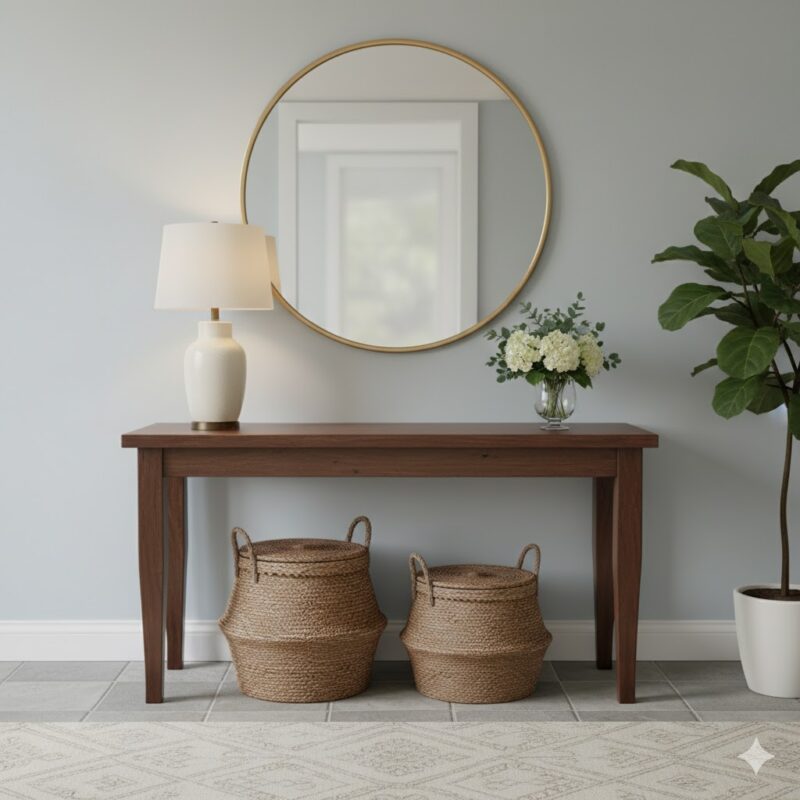
A console table is like the handshake of your entryway — functional, stylish, and quietly confident.
You don’t need anything fancy; even a simple wooden or metal-framed table can work wonders. What matters is how you style it.
Start with something eye-catching above it — a mirror, a piece of art, or even a set of smaller framed prints. Then layer your tabletop: a lamp for warmth, a small vase of flowers or greenery, maybe a decorative tray to catch your keys.
Underneath? That’s prime real estate. Try woven baskets for shoes or scarves, or even a few stacked storage boxes that look intentional.
It’s practical, but it also gives your entryway an instant sense of personality — like, “yes, someone with taste lives here, but they’re also chill about it.”
2. Add Warmth With Lighting That Glows
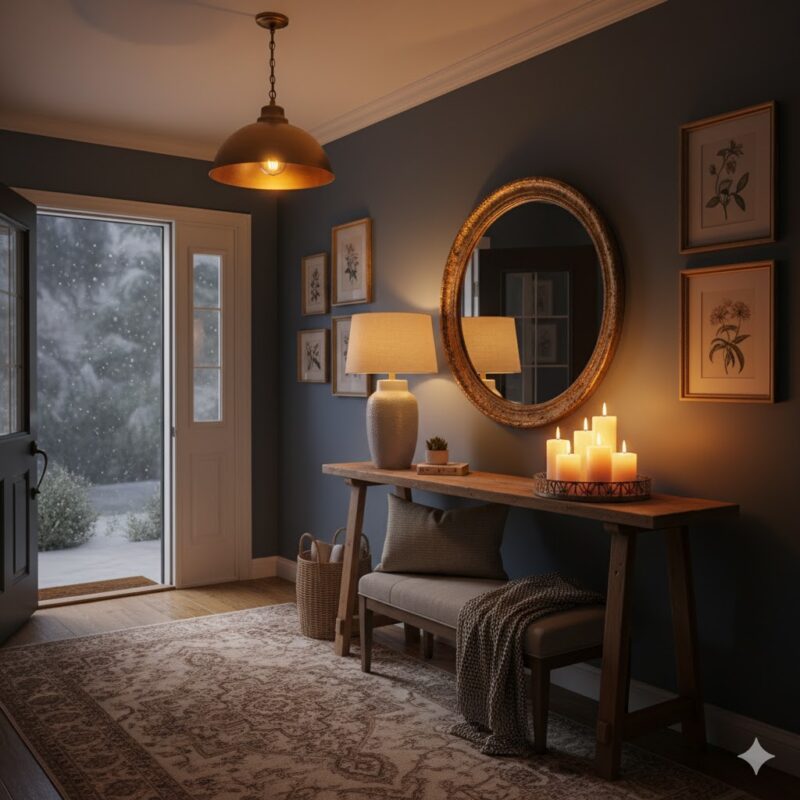
Lighting makes or breaks your entrance. A harsh ceiling light can make the space feel sterile, while warm layered lighting makes it glow — literally.
If you’ve got overhead space, swap in a pendant light or a small chandelier. Think textured shades (linen, rattan, frosted glass) instead of anything too shiny. Add a table lamp or wall sconce for a softer glow.
And candles — always. Even one candle on a tray by the door adds warmth and a gentle scent that welcomes everyone inside.
The goal isn’t brightness — it’s atmosphere. You want that soft, amber tone that feels like a quiet exhale after a long day.
3. Don’t Skip the Mirror (It’s Magic)
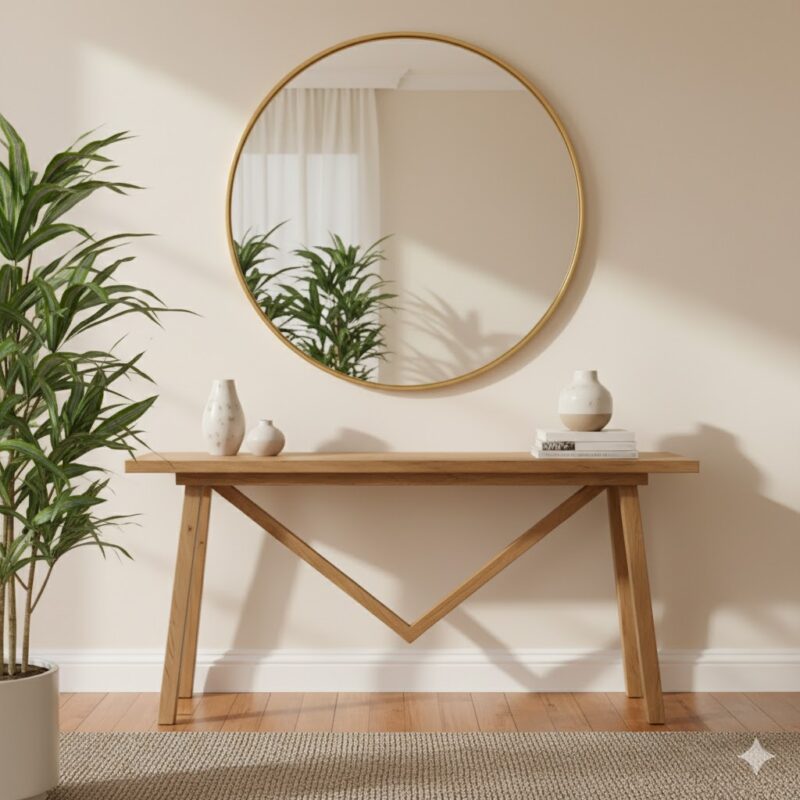
Mirrors are one of those design tricks that never fail, especially in small or dark entryways. They bounce light, make the space feel larger, and — let’s be honest — give you that last-minute hair check before stepping out.
Round mirrors add a soft, modern touch; vintage-style ones bring charm and warmth. You can even go full-length if you’ve got wall space.
Pro tip: hang it opposite or near a light source to double the brightness.
It’s practical, but also kind of poetic — you walk in and see yourself, reflected back, already home.
4. Layer in Natural Textures
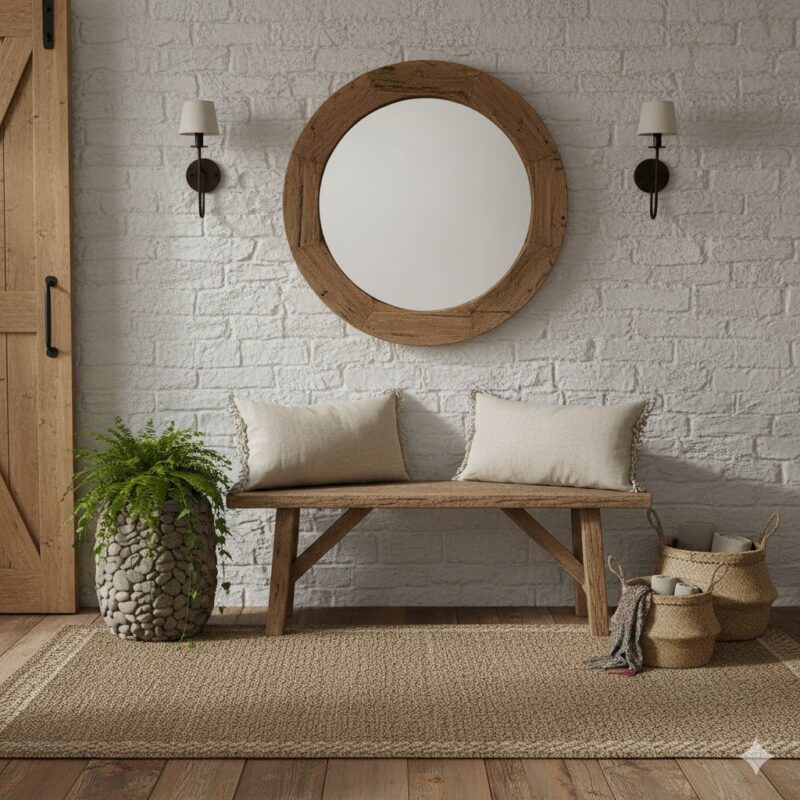
Rustic or modern, every good entrance needs texture. It’s what keeps it from feeling too flat or sterile.
Bring in natural materials wherever you can — wood, wicker, stone, linen, jute. They make the space feel grounded and warm, like a soft handshake rather than a stiff one.
A jute runner softens hard floors. A woven basket holds scarves or umbrellas. A simple wooden bench becomes both decor and utility.
Even one or two of these touches can shift the mood completely — from cold and functional to warm and lived-in.
5. Give Your Floor a Little Personality
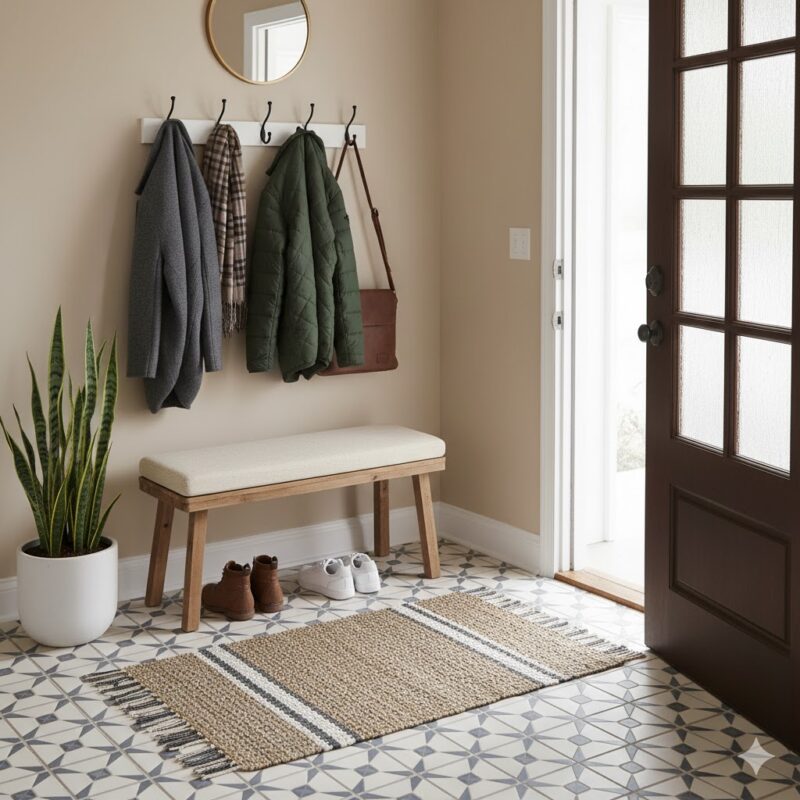
Floors are often the most overlooked part of an entrance — but they set the entire tone.
If you’ve got the chance to change things up, patterned tile or stone is worth considering. It hides dirt and gives instant character.
But even if you can’t renovate, you can still make an impact. A good rug — something textured, durable, and stylish — is an easy win.
Look for flatweave or jute rugs (they handle high traffic well), and don’t be afraid of patterns. Mud and scuffs are way less noticeable on something that’s already got personality.
It’s a small change, but it makes a big visual difference.
6. Add a Bench or Seating Spot
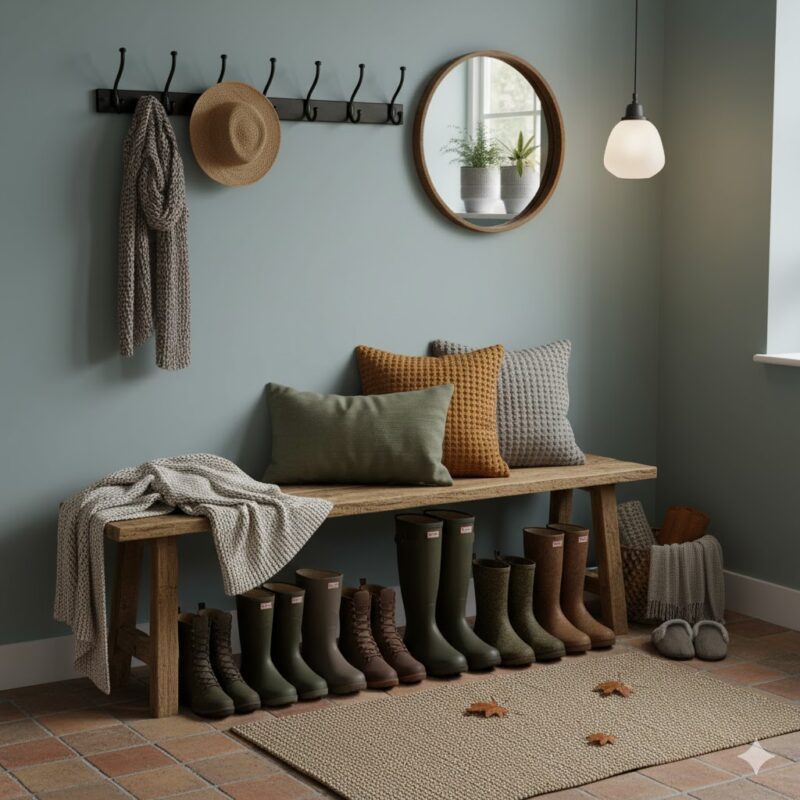
If you have even a sliver of space, add a bench or small seat. It’s one of those details that feels practical but also instantly homey.
It’s where you sit to tie your shoes, drop your bag, or pause for a minute when you come in. Add a throw pillow or two, and suddenly it’s both functional and styled.
For smaller spaces, a narrow bench or even a stool works just fine. And if there’s room underneath, tuck baskets or boxes below for hidden storage.
It’s one of those subtle features guests always appreciate — even if they don’t consciously notice why.
7. Bring in Greenery (Always a Good Idea)
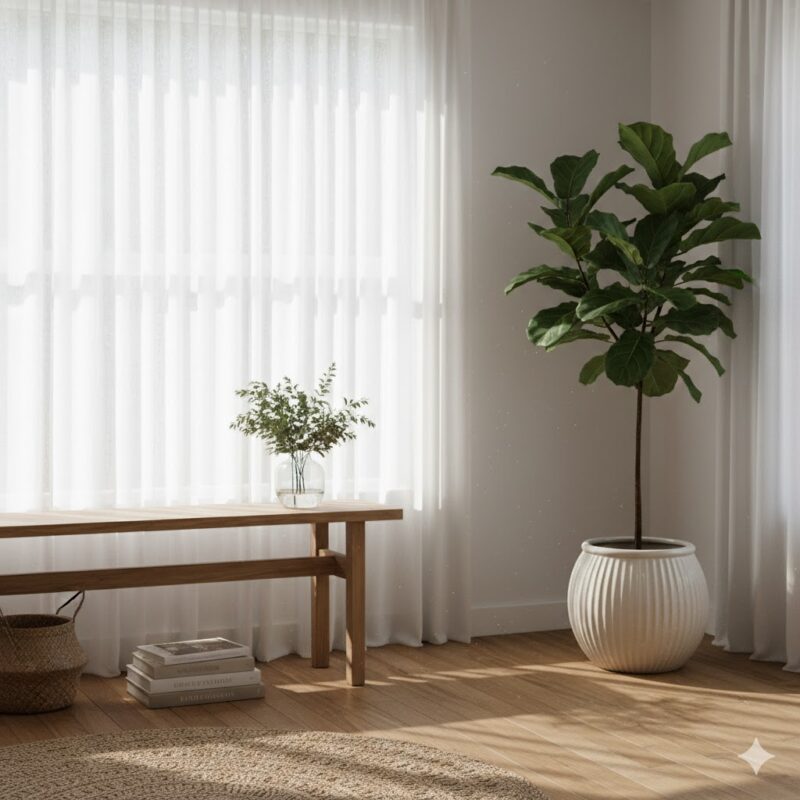
Plants do for interiors what a deep breath does for the body — they bring life back in.
Even a single potted plant near the door makes the whole space feel fresher. Go for low-maintenance ones like a fiddle leaf fig, snake plant, or peace lily.
If you don’t get much natural light, faux plants can still work. The trick is choosing ones with realistic leaves — and occasionally wiping them down (dust ruins the illusion faster than anything).
Or, if you’re not into plants, even a vase of fresh-cut stems on your console table can create that same energy — something alive and shifting week to week.
8. Style With Layers, Not Clutter

Decorating an entryway can easily tip from “cozy” into “chaotic.” The secret is layering intentionally.
Start with one main anchor piece — your console or bench — and build around it. Add just a few decorative layers: a lamp, artwork, maybe a small bowl or tray.
You want depth, not density.
And honestly, blank space is part of the design too. Let walls or surfaces breathe a bit.
A few well-chosen details say much more than a dozen mismatched ones.
9. Create a Subtle Signature Scent
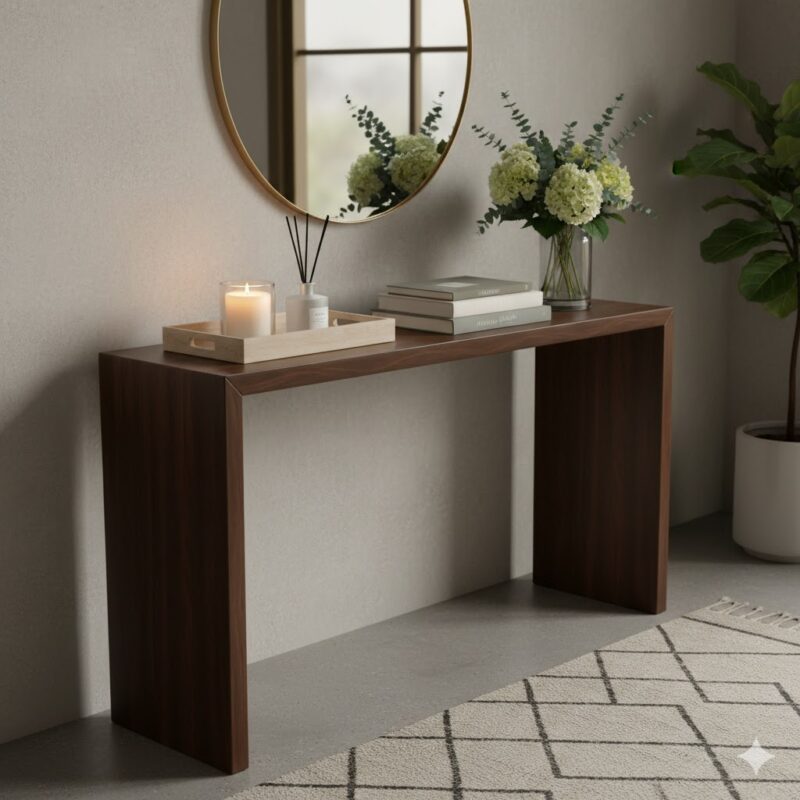
Ever walk into someone’s home and it just smells like them? Not in a weird way — more like comfort and familiarity.
That’s the final layer of a great home entrance: scent.
A candle, diffuser, or essential oil spray near the door can completely change the atmosphere. Go for soft, welcoming scents like sandalwood, vanilla, cedar, or something herbal.
It doesn’t need to be strong — just enough that when you step inside, the air feels different. Like you’ve crossed into your own little world again.
The Feeling You’re After
At its best, a home entrance isn’t about decor at all. It’s about creating a transition — from the noise and movement outside to the calm and warmth inside.
You want it to whisper, not shout. To welcome, not impress.
Maybe your console has a candle that burns every evening. Maybe there’s a bowl where you drop your keys without thinking. Maybe you keep a small note or photo on the wall that makes you smile as you leave.
Those are the quiet details that give your space heart.
It doesn’t matter if your “entrance” is a grand foyer or just a corner by the front door — what matters is that it feels like you.
Because at the end of the day, design isn’t just about what people see. It’s about how a place makes you feel when you come home — and how it welcomes everyone who walks in after you.